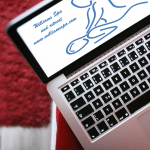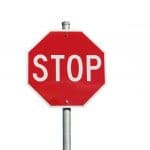Staff photos let prospective clients and members “see” your wellness business before they ever visit your store or buy from your website. And we generally suggest including staff photos in print materials, too.
Your goal is to reinforce the credibility of your business for potential customers, so it’s important that these business photographs reflect an image that is consistent with your business and that strikes a chord with potential customers.
- No candids! Use a professional photographer. This is not the time to use the shots from the office holiday party or the family reunion. Amateur photos almost always look, well, amateurish.
- A professional photograph of a single person, taken at the photographer’s studio, should cost no more than a couple hundred bucks. Typical sessions last 30 minutes to an hour. The fee should include the digitl images. You can then crop and resize these images as needed.
- In general, the goal for this kind of photograph is to keep it as simple and neutral as possible. You can’t know in advance where you may want to use it — in a magazine or e-zine, on a website, on a business card, in an advertisement. Keep your options open.
- Use a photographer who has experience with corporate or executive headshots. Glamour Shots and similar studios create a “fashion model” image which is generally not suitable.
- Match your clothing to your target customer. If your business sells to employers, upscale business casual or suits may be the best choice. If you run a wellness center that serves high-powered professionals, consider more formal, tailored choices. If your business serves young families, casual dress may work well. Older adults often prefer a slightly more formal look.
- In some wellness businesses, lab coats can enhance your professional image. Avoid scrubs. If you must wear scrubs, avoid patterns and go for solids unless your business targets kids.
- If you train athletes, workout clothes may be a good choice. Choose coordinated tops and bottoms. Avoid super-casual wind suits or sweats.
- Choose solids, not patterns. Choose neutrals -– brown, black, medium to dark gray, olive to dark green, white and cream. Avoid: bright patterns and colors, striped shirts, t-shirts, tank-tops and sweat-shirts. Should everyone wear the same color? It certainly avoids distracting differences — but dressing everyone in black doesn’t exactly say “wellbeing,” does it?
- Mock turtlenecks or simple crisp white shirts and blouses are good semi-formal choices for both sexes. Top with a blazer or suit jacket for a more formal look. For fitness professionals, polos are often a good choice that convey an active and professional image for both men and women.
- The photograph should focus on you and not distract the viewer with jewelry. For women, no enormous dangly earrings, no distracting necklaces or bracelets. For men, we usually suggest avoiding necklaces and bracelets for this type of photograph unless it’s important to your business image.
- For women, we suggest normal “day” makeup. You do not need to apply more intense makeup as you might for evening wear. If you don’t normally wear makeup, applying soft shades of lipstick, eyeliner and tinted foundation may help you avoid looking washed-out in your photograph.
- It’s generally wise for both men and women to minimize skin. Again, though, tailor this to your target customer. If you teach a weight loss program based on belly-dancing, a skimpier outfit may be fine! Just remember that you want potential customers to be impressed by your knowledge and capabilities, not distracted by anyone’s outfit.
- If it’s a group shot, coordinate low-key attire. Your staff doesn’t have to dress identically. However, you don’t want your prospects paying attention to the loud stripes on one person’s shirt and the incredibly trendy shoes that someone else is wearing. If everyone else is wearing black pants, the one person in jeans is conspicuous.
- Try for a comfortable, natural, confident look. Avoid overly-posed or dramatic shots. If your group picture is posed like a band of super-heroes, potential customers will spend more time noticing the unusual pose, not noticing how professional and trustworthy you look.
- For both men and women, time the photo session a couple of weeks after the most recent haircut.
- Good lighting is important, especially for those with darker skin tones, and a professional photographer will have the appropriate equipment.
- Generally, choose a neutral light-colored background with no visual distractions (for example, no trees, pictures, stair railings, or other people). Avoid dark backgrounds. Photos that appear in print — at the top of a magazine column, for example — are usually quite small. If the background is dark and you have on dark clothes, depending on skin tone you’ll either be almost invisible, or you’ll look like a disembodied floating head.



